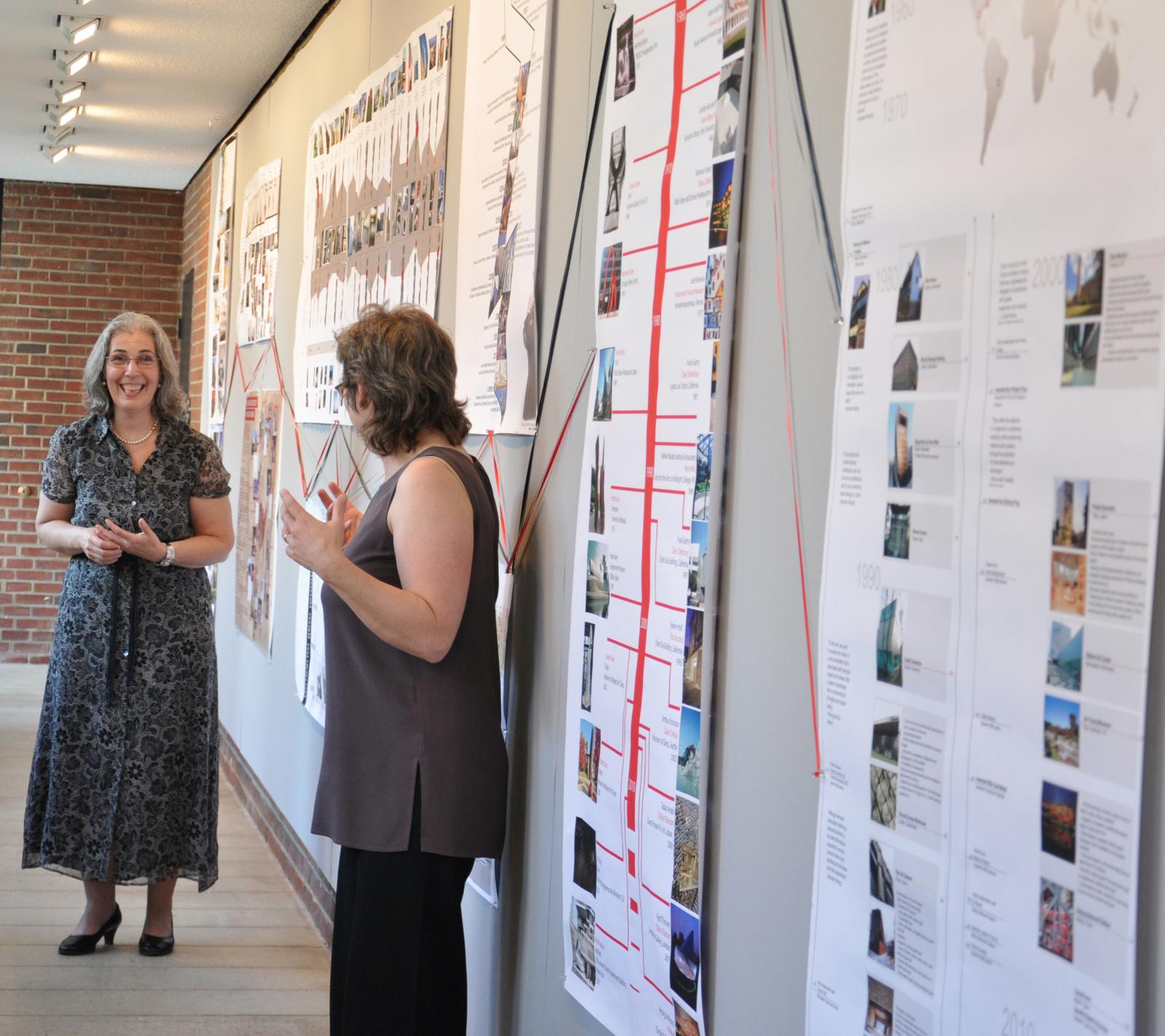Conventional wisdom dictates a slowdown in retirement. Yet, for Dr. Isabelle Gournay, it appears she is just getting started. Since transitioning to Professor Emerita of Architecture last spring, Gournay has released a new book on planned communities, contributed to a second book on American art deco and is adding new insights to the phenomenon of the American Beaux-Arts architect. But if retirement is about taking the time to follow your passions, Gournay is right on track. She has built an established career as a scholar of housing, a lifelong interest since her early days as a student in France. She is an authority on the convergence of social, political, cultural and historical context and the built environment, knowledge she has shared prolifically with three generations of students. Her dedication, skill and standard of excellence has helped shaped the culture and pedagogy at MAPP.
Born and raised in France, Gournay first came to the United States at the age of 20, a solo trip to explore the Mid-Atlantic through the Greyhound bus pass program. “I was a young architecture student and wanted to see the United States and thought, why not?” she recalls. She returned a few years later to obtain a Doctorate of Art History from Yale, simultaneously juggling work, a new marriage and the birth of her daughter. After Yale, Gournay taught as an adjunct at a few universities in Atlanta. When she wasn’t teaching, she was exploring the architecture and urbanism of the American South; she wrote the A.I.A. Guide to the Architecture of Atlanta before coming to UMD in 1992.
It was in Atlanta that Gournay began questioning why some housing projects thrive while others, despite their seemingly beautiful architecture, fail, and the lessons that can be learned when history, design and socio-economics intersect. She carried this interest to Maryland, integrating it into coursework when she saw sociology wasn’t part of the general architecture curriculum. Later, she took over a course on affordable housing from Ralph Bennett, transforming it into an interdisciplinary examination of housing reform, planning, architecture and the social constructs that guide it, the first of its kind in the school. A longtime resident of Greenbelt, Md., a quintessential planned community originally constructed as New Deal public housing, Gournay had a unique purview of life in a cooperative community; students benefited from her expertise and were encouraged to examine the places they grew up as well. The massively successful course influenced the trajectory of many students, who went on to work for housing groups like Enterprise Community Partners.
“Isabelle is a great gift to the school,” said Professor Emeritus Ralph Bennett, who collaborated with Gournay on an affordable housing exhibit at the National Building Museum. She made the [affordable housing] course into a really excellent course that every school ought to have. She had very high standards of what students were writing and it resulted in some really great papers. She brought with her a set of standards and a skill that she continues in her research. Isabelle is a serious scholar and I admire her enormously.”
Gournay’s new book, Iconic Planned Communities and the Challenge of Change, co-edited with American Studies Professor Mary Corbin Sies and Robert Freestone, is a case study of 23 planned communities on six continents, from Scotland’s 19th-century New Lanark company town and Chicago’s Riverside community to England’s Wythenshawe garden city and the new urbanist enclave Seaside in Florida. The book is less a history of these communities and more an examination of their fate; the social, political and economic drivers, events, tourism—even good intentions—that shape their trajectory.
“The Römerstadt community in Frankfurt, Germany, which was considered the pinnacle of community planning in the ‘20s and ‘30s, didn’t have good transit to downtown Frankfurt, so they built a U-Bahn transit line. However, they built it in such a way that it bisected the town and that completely obliterated the vistas. What should have been a positive change has been detrimental. The past can inform the present; it’s that notion of living legacy and—I think at the level of a planned community—it is really important.”
Beyond learning from history is the idea of preserving it, something Gournay sees more and more as a key element to a community’s survival. “If residents know what a community is and are aware of its origin story and share the same ideals, it strengthens everything about the community and creates a social stitching,” said Gournay. “We didn’t talk about it a lot in the book, but in cities that have a movie theatre, the fate of that movie theatre is a bit of an indicator. Whether it’s still a movie theatre or has been reinvented as a different community asset, it’s almost a litmus test for the community’s resilience.”
As 21st century designers and planners gravitate to sustainable, community-driven urban centers, Gournay sees a possible resurgence in the planned community, albeit different from the strong images and ethos conceived by designers 100 years ago. Her hope is that the book will create a conversation around how planning and community input fit together to create the hybrid communities of the future. “Community resilience involves people,” she says. “Sometimes, it’s too much top down, and we’re trying to show what can be bottom up.”
Now in retirement, Gournay is going back to her roots of design origin: the Ecole des Beaux-Arts, where she obtained her architecture degree. Her latest efforts examine the contributions of U.S. and Canadian architects trained at the Ecole des Beaux-Arts. She divides her time between Paris—where she frequently lectures—and an active civic life in Greenbelt, where she serves on a number of boards in between research and writing. Once in a while, she even gets a few minutes in her garden, which smacks more of retirement than her typical routine. “Yes, retirement is keeping me very busy,” she laughs.

